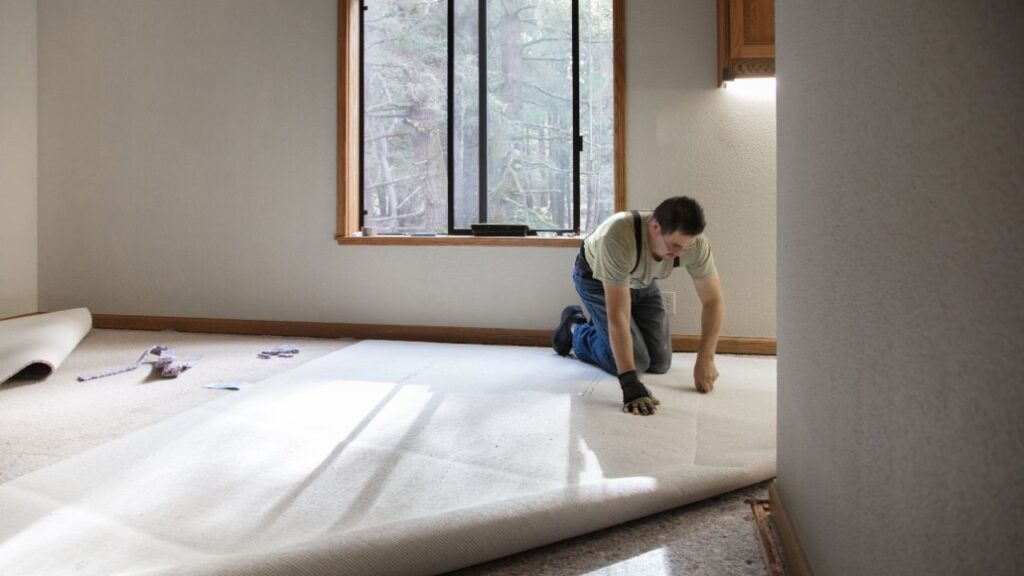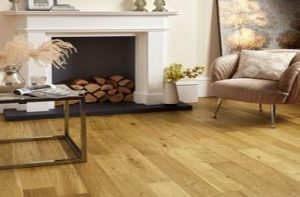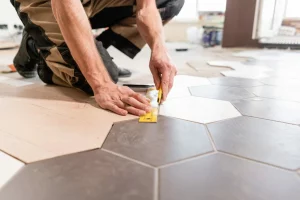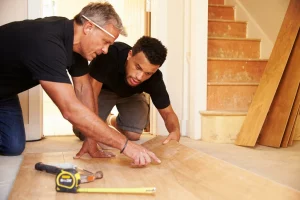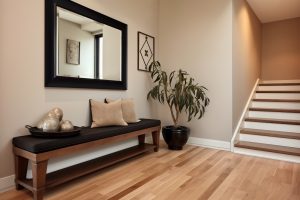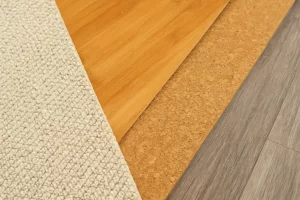Carpet installation is a critical aspect of home renovation, providing comfort, insulation, and aesthetics. A well-installed carpet improves the overall appearance and adds value to the property. A substandard installation, on the other hand, can result in uneven surfaces, wrinkles, and excessive wear. Knowing the proper techniques, materials, and expenses can guarantee a seamless and durable outcome.
Why Carpet Installation Matters
Carpets add warmth and sound insulation, making them an excellent option for domestic and commercial spaces. The carpets can be made of different materials and come in many designs, making it possible to customize according to the interior style. Improper installation can lead to bumps, crevices, and frayed edges, shortening the lifespan of the carpet. Effective planning and implementation are required for a high-quality finish.
Common Carpet Installation Problems
Numerous problems are caused by improper measurements, low-quality underlay, and faulty fitting methods. Incorrect installation method for the type of carpet can result in bubbling or rippling. Seams need to be properly aligned so that there are no visible gaps and inconsistencies. Proper tools and professional installers can prevent such problems.
📖 Also Read This: How to Clean QFlooring Carpets Easily
Types of Carpets for Homes and Businesses
Choosing the appropriate carpet is based on the amount of foot traffic, budget, and desired look. Various materials provide different degrees of durability and maintenance needs. Here’s a brief comparison of common carpet types:
| Carpet Type | Best For | Pros | Cons |
|---|---|---|---|
| Twist Pile | Living rooms, bedrooms | Durable, hides footprints | Can flatten over time |
| Saxony | Bedrooms, lounges | Soft, luxurious feel | Shows footprints easily |
| Loop Pile | Hallways, stairs, offices | Hard-wearing, ideal for high-traffic areas | Not pet-friendly (claws can catch) |
| Berber | Offices, commercial spaces | Stain-resistant, low maintenance | Less soft underfoot |
| Velvet Pile | Luxury spaces, formal rooms | Soft, plush appearance | Less durable, costly |
Steps for a Smooth Carpet Installation
1. Preparing the Floor
A level and clean subfloor is essential for perfect carpet installation. Clear the subfloor of old flooring, nails, and debris to provide a smooth foundation. In case the subfloor is not even, a leveling compound can be applied to fix imperfections. Preparation guarantees that the carpet lies flat and has a longer lifespan.
2. Selecting the Perfect Underlay
Underlay adds comfort and longevity to a carpet. Foam underlays add softness, rubber underlays add durability, and felt underlays assist with insulation. The correct underlay avoids early wear and enhances energy efficiency. It is advisable to invest in quality underlay for improved long-term performance.
3. Measuring and Cutting the Carpet
Precise measurements guarantee a flawless fit with minimal waste and extra costs. It is advisable to provide 10% more material to allow room for fitting and adjustments when turning corners. Cut the carpet using a sharp knife to get a clean and accurate cut. Cutting properly avoids uneven edges and gaps.
4. Installing the Carpet
There are two main methods of installation: stretch fitting and glue-down. The stretch-fit installation involves gripper rods and a knee kicker to hold the carpet in position. The glue-down installation includes the use of adhesive to affix the carpet directly onto the subfloor. The method is determined by the carpet type and the room it’s being installed in.
DIY vs Professional Carpet Installation
DIY Installation
There are homeowners who fit carpets themselves to avoid the cost. It can look easy, but home installation also needs specific tools such as carpet stretchers and tack strips. Irregular edges and loose-fitting are some common mistakes that can impact the durability of the carpet. One must thoroughly study and prepare beforehand before trying DIY installation.
Professional Installation
Employing experts guarantees a smooth and durable finish. Experts possess the skills and equipment to work with intricate room designs, stairs, and carpet joints. Professional fitting also comes with guarantees, which provide homeowners with assurance. Although it is more expensive, the outcome is often worth it.
Carpet Installation Prices in the UK
The price of carpet installation varies with carpet material, underlay, and labor fees. Here is an estimate of the costs involved:
| Cost Factor | Estimated Price (UK) |
|---|---|
| Carpet Price | £5 – £60 per sqm |
| Underlay | £2 – £10 per sqm |
| Fitting Charge | £3 – £15 per sqm |
| Additional Costs (Grippers, Door Trimming) | £20 – £50 |
For a 20 sqm medium room, overall costs of carpet installation range from £200 – £1200. The ultimate price varies with material quality and complexity of the job.
Carpet Maintenance Tips for Longevity
Regular maintenance keeps carpets looking fresh and extends their lifespan. Vacuuming at least twice a week helps prevent dust and dirt buildup. Stains should be cleaned immediately using a mild detergent or carpet-safe cleaning solution. Deep cleaning every 6-12 months removes embedded dirt and bacteria.
Final Thoughts on Carpet Installation
Carpet installation is an excellent way to enhance the comfort and appeal of a space. Choosing the right carpet, underlay, and installation method ensures durability and a high-quality finish. While DIY installation can be an option, professional fitting guarantees better results. Investing in proper maintenance will keep carpets looking new for years to come.
Need expert advice on carpet installation? Contact a professional fitter today!

